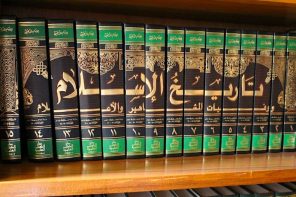I’ve recently been part of a colloquium on religion in the classroom, thinking about how to navigate that tricky pedagogical minefield known as the “insider-outsider” problem—at least that’s how some of us insiders discuss it.
What we mean is that the academic study of religion in the modern secular university has grown up on the dogma that we teach traditions fairly and objectively—and, to put it bluntly, that we do not confuse preaching and bible study with rigorous examination of ritual practices and sacred texts. In short, we approach religious traditions as outsiders even if we, and our students, may be insiders to one of them.
Of course, keeping personal theological reflection out of the classroom is like keeping religion out of politics or violence out of sports. The whole infrastructure leaks.
As part of our gathering, we visited an exhibition of Chinese dissident artist Ai Weiwei. There was something in the artist’s stance toward both art and politics that was strangely inspiring for some of us. His art is playful, often humorous, but his biography demonstrates how serious art and humor can be; a few years ago Chinese government authorities detained him for almost three months, and have kept a close watch on him ever since.
Critical outsiders often sum up Ai’s work as “iconoclastic,” a very old term from deep inside the Christian tradition. Iconoclasts are the “breakers of icons,” sacred images used for worship and devotion. Religious people love things, material goods and objects that inspire and produce piety—we touch and kiss and taste and smell and gaze upon them. Objects have always been central to religious traditions, and always will be. Yet sometimes, some people think others might be loving the objects too much, forsaking the heavenly for pursuit of the earthly. Nothing less than destruction will set us on our right path again, so the iconoclasts proclaim.
In the modern age, as art has become sacred, the smashing of the artistic tradition becomes itself an iconoclastic act. One of Ai’s great works is a large-scale, three-panel photo artwork from 1995 titled Dropping a Han Dynasty Urn. It is iconoclastic, smashing an object of the past and by extension smashing the tradition itself.
This week, Ai’s artwork is back in the news. On Sunday, Dominican-born artist named Maximo Caminero walked into the Pérez Art Museum in Miami and smashed one of the vases that was part of Ai Weiwei’s Colored Vases display. Caminero’s complaint? That local galleries put all their time and effort into international artists of high esteem, and forsake the locals.
So here’s the thing: iconoclasm is itself an iconic act. One image replaces another. Ai was careful to have his iconoclastic act documented, skillfully shot on camera and reproduced for many to see. Likewise Caminero did not sneak into the gallery under cover of night to do his smashing, he went in the middle of the day on Sunday and was sure that others were watching (we are waiting for the video surveillance footage of Caminero to emerge and watch that go viral).
When the Taliban decided to destroy the great Buddha statues in Bamiyan in 2001, they made sure they announced it to the world’s media outlets before doing so, and a Google search will quickly show how proliferous is the depiction of that destruction. Or, here is an image made of pious Dutch Reformers in the sixteenth century, smashing a Marian statue in a church—the artist captures the carefully orchestrated mob just as they tear the statue down.
![]()
Tradition is itself a series of creative and destructive acts, stability and instability; the icons are the tradition as much as the images of iconoclasm. Nothing stays the same.
To teach and write about religious traditions is to enter that fray, to pull from tradition, to find one’s place within it, and to turn that in new ways, often breaking things in the process. Teachers and writers on religion can have an understated aim of performing an iconoclastic move toward the students’ own assumptions, their own ideals and images. We call it “critical thinking,” and modern universities are founded on such an ideal. But, translated across the inside-outside divide, critical thinking becomes a shaking up of faith, or worse, in the wrong hands, faith bashing.
Nietzsche gave us philosophy with a hammer—though what is more often needed in the classroom is a screwdriver.
To profess religion in the classroom (or in publications) is to play the artist, to navigate a thread between the traditional and the new, between critique and commendation; to find the DMZ between the inside and outside, inviting students into that uncomfortable space.
Our very critique is an act of commitment—but with humor, a lightness of touch, always at risk of dropping the old thing and being left to gather the shards.




